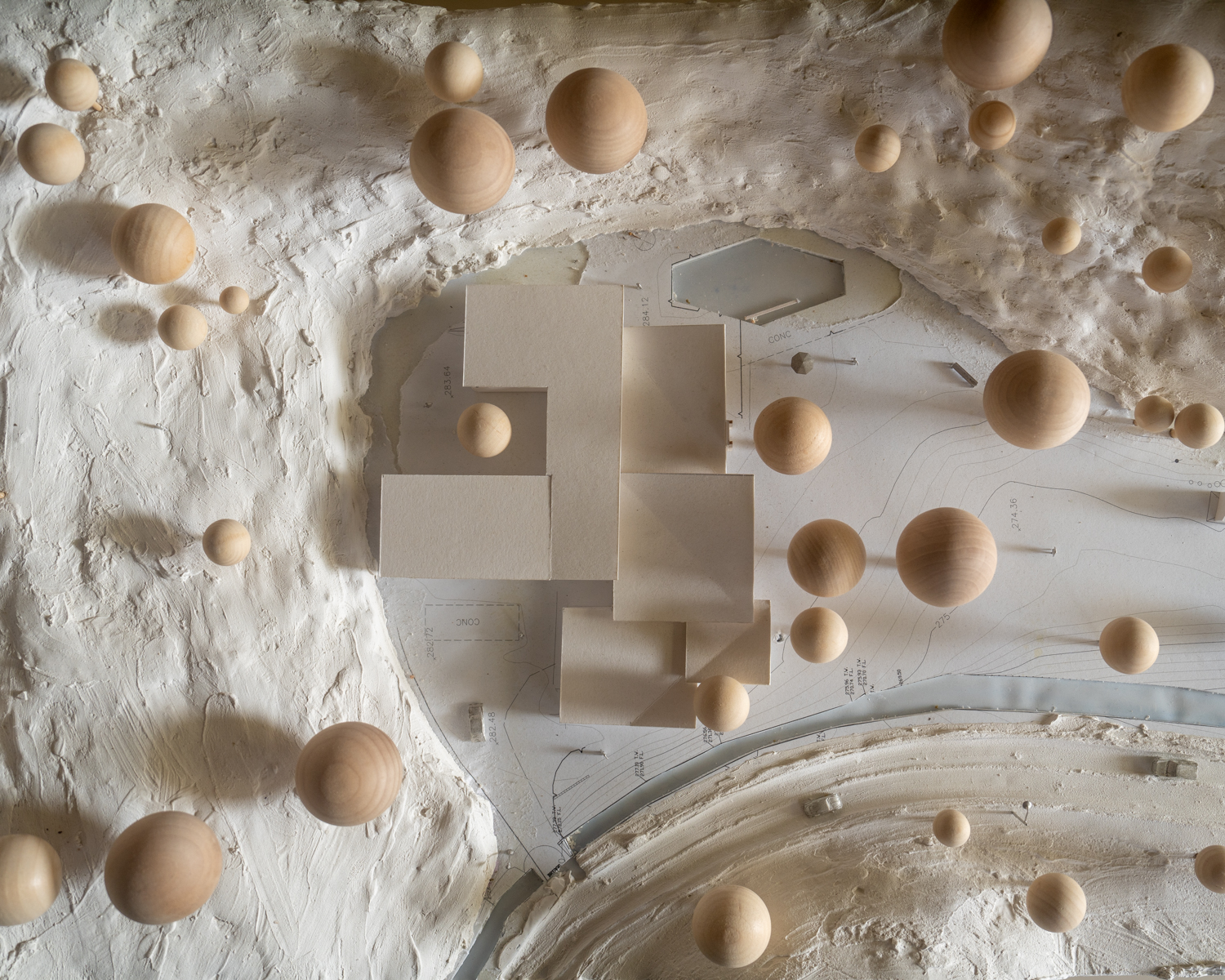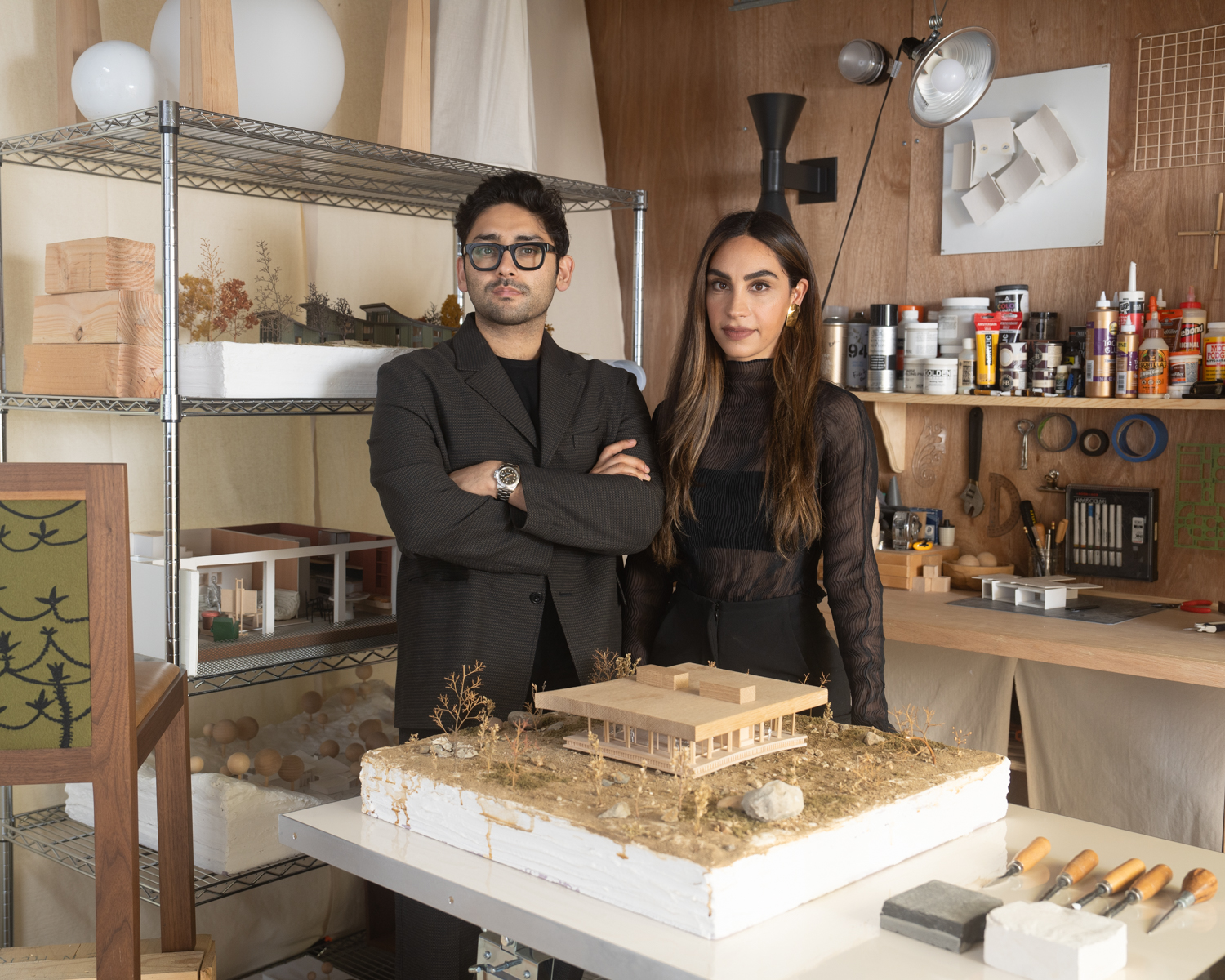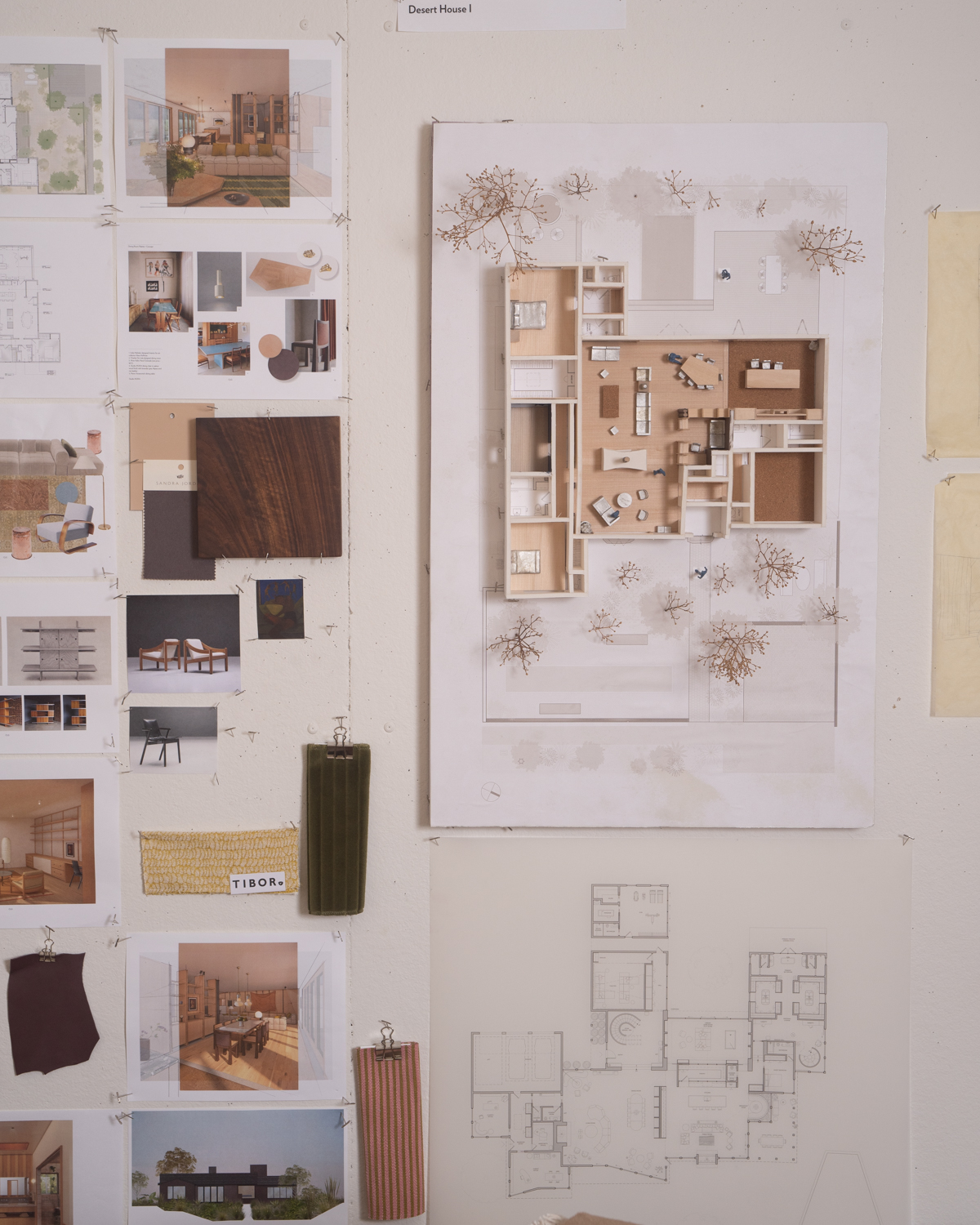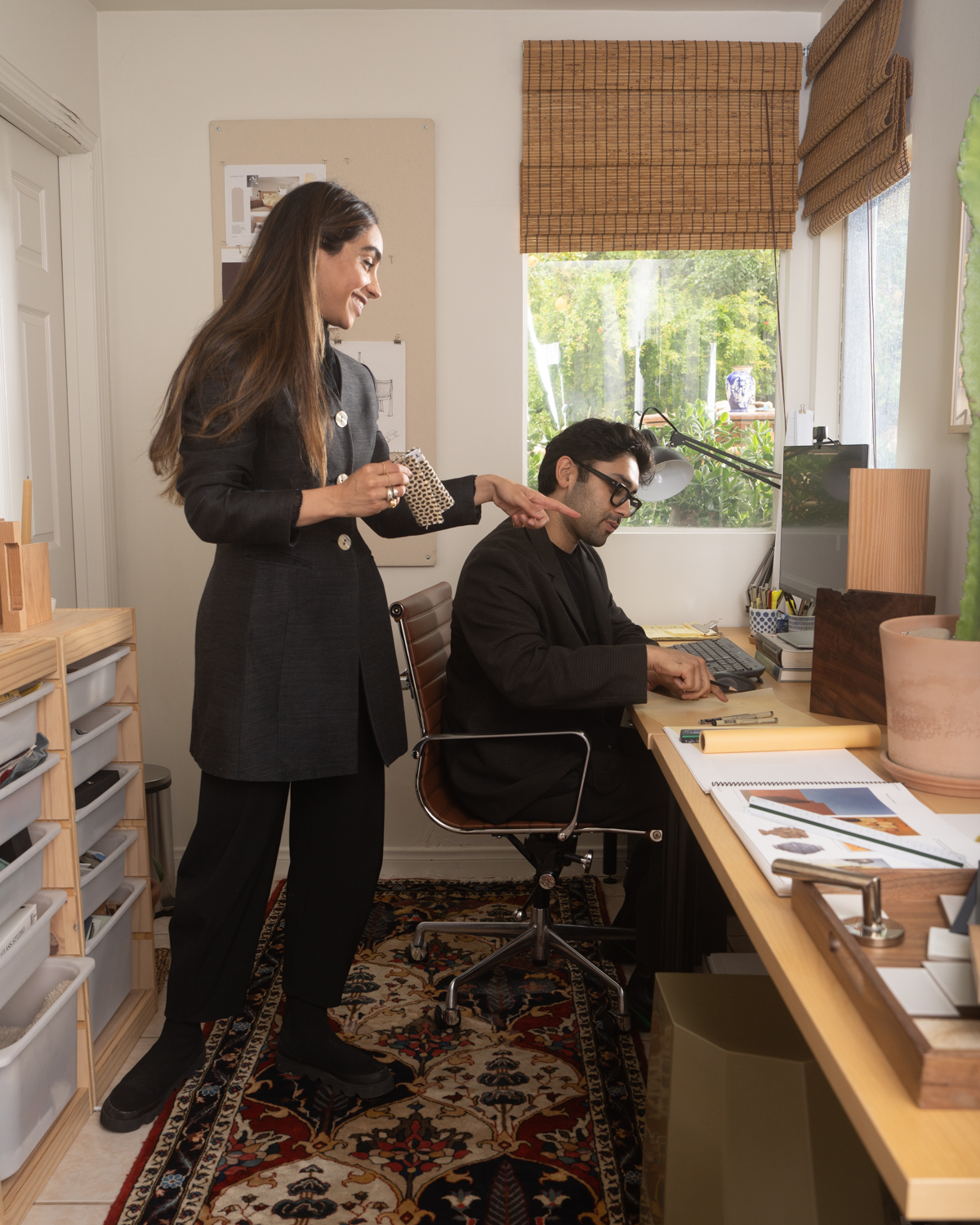Craft and experimentation, history and future, architecture and design—bringing ideas and practices into harmony has been part of Zabie Mustafa and Neda Kakhsaz’s work since they were both undergraduate architecture students at Pratt, where they met in 2011. It follows that collaboration would come naturally to the pair. “Although our professional careers had barely just begun, we had a sense that we were both curious about the same concepts, we shared a common sensibility,” they said in a joint interview with Prattfolio over email. “We began working on side projects such as competitions and folly concepts together on our time off from our studies. We would always be there for one another, helping each other, critiquing each other’s work, and sharpening our partnership.”
Today, this plays out in their practice as Studio MUKA, the Los Angeles-based firm they formed in 2021, which takes a multidisciplinary approach to architecture and design for spaces. This year, their work has been highlighted by Architectural Digest and Elle Decor, among other publications, and California Home + Design awarded Studio MUKA its 2024 Emerging Designer Award. Connections—among their small team and clients, and elements of design—remain at the heart of their practice, which they’ve said strives to “achieve a ‘total work of art’” with projects at every scale.
The following Q&A has been edited and condensed.
How would you describe your roles in your design practice and the way you work as a team?
We take great pride in working collaboratively with one another. Both of us move between the disciplines of architecture, interior design, and object design, and we believe that our ability to shift fluidly in these roles makes our practice unique. We tackle all our projects with a holistic approach and believe that a project really comes together when the sum of the parts work cohesively together to make the whole.
How have you developed your shared creative—and entrepreneurial—sensibility as you’ve built your practice?
We look at every project as an opportunity to discover something new, and we take discovery and experimentation very seriously. The same goes for our entrepreneurship; we are big believers in setting up the groundwork and foundation of the firm both from a creative sensibility as well as [from] the business side. We always go back to this notion of thinking and making at the foundation of our practice. We are constantly trying things and fine-tuning our process. Ultimately, we are very excited to continue growing into the fabric of the profession and working with ambitious clients that resonate with our ethos and are as excited as we are about the future of design.

How do you work through problems or creative challenges together?
Design as a profession feeds off of challenges. All the specific challenges and parameters that we work to solve every day give meaning to our work. Any obstacles along the way offer an opportunity to create something that is truly unique to a particular set of circumstances. We look at the world through an optimistic lens rather than a pessimistic one. We believe that architecture and design are powerful channels for creating positive outcomes for the future.
“You never know what you can learn from and how you can grow from different relationships in these formative years.”
While developing your professional skills and prowess at Pratt, you were also forming meaningful connections. What piece of advice would you give to current students about finding their people?
We formed some of the most meaningful connections of our lifetime during our time at Pratt and we are so grateful for the friendships we created. The sense of camaraderie and the true bond that we developed with our peers is one that cannot necessarily be compared to other undergraduate experiences. Our suggestion to current and future students would be to listen closely to your intuition and be open to new experiences. You never know what you can learn from and how you can grow from different relationships in these formative years.
What was a piece of advice you received or a lesson learned at Pratt that’s stayed with you?
There are so many technical skills that we learned in our years at Pratt, from conceptual thinking, to drafting beautiful drawings and renderings, to strong presentation skills, and the ability to create physical models and objects with our hands. But above all, what really stands out to us is that Pratt instilled in us the ability to be free thinkers.
We learned to challenge norms, and that if there is something you want to achieve, you have the ability to go after it. We learned the strength and tenacity it takes to put a project together. And the strong will it requires to explain your thinking, allow your work to be judged in an open arena, and grow from every criticism or challenge.
Pratt emphasized the importance of studying our collective history, and we learned how to think about the future of human life with both a critical eye and an optimistic outlook.![]()
Photos by Carlos Jaramillo, at Studio MUKA in Los Angeles


